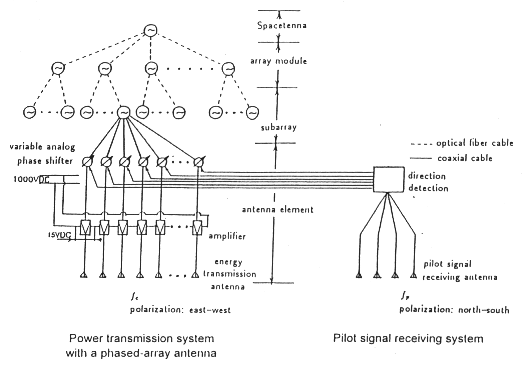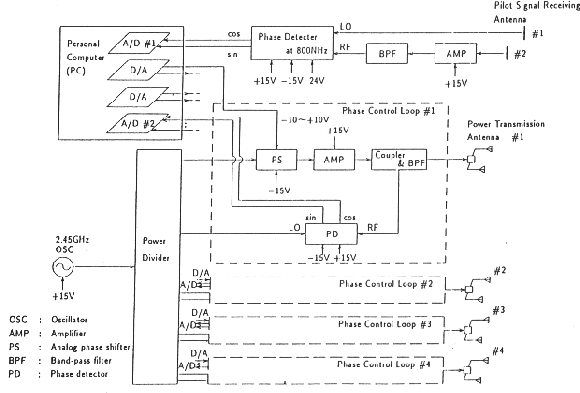Here are some key documents from the archive to get you started:
- What the Growth of a Space Tourism Industry Could Contribute to Employment, Economic Growth, Environmental Protection, Education, Culture and World Peace
- Space Tourism Market Demand and the Transportation Infrastructure
- General Public Space Travel and Tourism
- Artificial Gravity and the Architecture of Orbital Habitats
- Prospects of Space Tourism
More Documents
- 29 July 2012
- Added "Space Debris and Its Mitigation
" to the archive.
- 16 July 2012
- Space Future has been on something of a hiatus of late. With the concept of Space Tourism steadily increasing in acceptance, and the advances of commercial space, much of our purpose could be said to be achieved. But this industry is still nascent, and there's much to do. So...watch this space.
- 9 December 2010
- Updated "What the Growth of a Space Tourism Industry Could Contribute to Employment, Economic Growth, Environmental Protection, Education, Culture and World Peace
" to the 2009 revision.
- 7 December 2008
- "What the Growth of a Space Tourism Industry Could Contribute to Employment, Economic Growth, Environmental Protection, Education, Culture and World Peace
" is now the top entry on Space Future's Key Documents list.
- 30 November 2008
- Added Lynx
to the Vehicle Designs page.
- How Much Do You Know About Space
- Space Future Editor Wins NewSpace Journalism Award
- China's First Manned Docking of Space Module Is a Success
- Five Horrifying Facts
- NASA Will Pay You to Eat Astronaut Food
- Attention Teachers: If You Don't Apply to This Workshop
- Space Is Dirty
- The Film That NASA Banned
- SRI holds Inaugural Conference
- Zubrin's Proposal to Fund "Pathway to the Stars"
An Error Occurred
500 Can't locate object method "new" via package "Net::HTTP"
|
| |
1. Introduction
SPS2000 is a strawman model of solar power satellites (
SPS The general configuration of SPS2000 has the shape like a triangular prism with length of 303 meters and sides of 336 meters as shown in Figure 1 The prism axis is in the latitudinal direction, perpendicular to the direction of orbital motion. The power transmission antenna, spacetenna, is built on the bottom surface facing to the earth, and the other two surfaces are used to deploy the solar panels. 
Figure 1. General view of SPS2000.
SPS2000 moves on an equatorial
LEO 
Figure 2. Configuration of the spacetenna.
Figure 2 illustrates a configuration of the Spacetenna. The Spacetenna has a square shape whose dimension is 132 meters by 132 meters and which is regularly filled with 1936 segments of subarray. The subarray is considered to be a unit of phase control and also a square shape whose edges are 3 meters. It contains 1320 units of cavity-backed slot antenna element and DC-RF circuit. Therefore, there will be about 2.6 million antenna elements in the spacetenna. | |
 | |
|
Figure 3. Block diagram of the spacetenna.
Figure 3 illustrates a block diagram of the spacetenna. The spacetenna is composed of pilot signal receiving antennas followed by detectors finding out the location of the
rectenna
3. A Functional System Model of SPS2000
We design and build a functional system model of SPS2000 on the basis of the configuration of the power transmission system shown in the previous section. Its objectives are summarised as follows:
Figure 4 depicts a configuration of the functional system model. It is composed of an eight-element power transmission antenna array, a four-channel phase control loop and a pilot signal receiving system. Also, it includes a personal computer (PC) which estimates a direction of arrival of the pilot signal and adjusts values of phase to scan the antenna beam. Both systems of pilot signal reception and direction detection operate at 800 MHz. The direction of arrival of the pilot signal is determined by phase variations between two receiving antennas where the pilot signal is a sinusoidal wave of 800 MHz. The pilot signals received by the antenna elements are used in a phase detector (PD) to compare their phase values. Since input power to an RF port in a PD must be about 20 dB greater than that to the other port, an amplifier (AMP) and a band-pass filter (BPF) are inserted in front of the RF port. Since an additional phase shift occurs in an RF input signal through the AMP and the BPF, it should be compensated in the estimation of the pilot signal arrival direction. Two voltages in the PD outputs correspond to in-phase and quadrature components of the phase variations between input ports in the PD. The two voltages are captured by a PC through an A/D converter and used to compute the direction of travel of the pilot signal. | |
 | |
|
A power transmission antenna element is a cavity-backed slot antenna designed by the authors. An eight-element array antenna is used in the functional system model. As it is excited by a four-channel phase control loop, every two antenna elements are supplied by the same phase and power of about 1W by one of the phase control loops. Hence, this type of the antenna array achieves one-dimensional microwave beam scans. Now we explain the phase control system in the spacetenna. There is an oscillator of 2.45 GHz as a signal generator in the system. The output power of the oscillator is distributed to components in the loop through several power dividers. The four phase control loops all have the same configuration that includes an analog phase shifter, an amplifier, a directional coupler, a band-pass filter and a phase detector. These components which are based on Si technology and connected to each other by coaxial cables adjusted in length are made from dielectric substrates (CGP-500, CGC-500) produced by Chuko Chemical Industries, LTD. Figure 4 shows that the power divider has eight terminals, four for inputs exciting antenna elements after their phases are tuned in the control loops to form the microwave beam at a specified direction, and the other for reference signals used to estimate phases at input ports of the antenna. The phase variations are measured by the phase detectors which compare reference signals with antenna input signals, and the results are captured by a personal computer through an A/D converter. The PC carries out phase analysis and computes voltages for analog phase shifters to achieve the desired phase variations. The procedure mentioned above is repeated until the desired state in phase is obtained. Thus, the control loop realizes a desired microwave beam scan by repeatedly detecting the direction of arrival of the pilot signal and adjusting values of phase in the antennas.
4. Conclusion
This paper summarized the conceptual study of SPS2000, the solar power satellite strawman model, developed in Japan. We mentioned the spacetenna which was composed of the pilot signal receiving system and the power transmission system. Its functions are to detect the direction of arrival of the pilot signal and to scan the microwave beam to the specified direction by tuning values of phase in the analog phase shifters interconnected with the power transmission antennas. We designed and built the functional system model. Its objective is to realize the SPS2000 concept and to show the capability of
SPS
Acknowledgments
This research is supported by Grant-in-Aid for Developmental Scientific Research [A][2] 06505002 from the Ministry of Education, Science and Culture of Japan. The authors would like to thank Mr. Xiyi Zhu, a visiting scholar at Hokkaido University, for his profound contribution toward advancing the study on the spacetenna of SPS2000. He also designed microwave components operating at 2.45 GHz which comprise a phase control system in the functional system model. The authors would also like to acknowledge Professor N.
Nagatomo
References
| |
An Error Occurred
500 Can't locate object method "new" via package "Net::HTTP"

